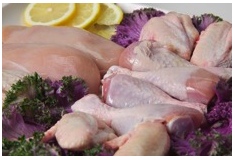
Research looking more closely at Salmonella transmission in poultry flocks
Food in Canada
Food Safety Processing Meat &Poultry bacteria foodborne pathogens salmonella University of ArkansasA University of Arkansas graduate student is studying how Salmonella spreads among chicken flocks hoping the answer will make poultry products safer

Fayetteville, Ark. – How exactly is Salmonella transmitted within a flock of chickens?
A scientist at the University of Arkansas is looking to answer that question and hopefully find  a way to prevent the spread of Salmonella.
a way to prevent the spread of Salmonella.
Yichao Yang is a graduate student in the Department of Poultry Science and says her work “focuses on drawing an exact picture of how Salmonella is transmitted when it is introduced into a chicken.”
Despite Salmonella being recognized as a major foodborne pathogen, the mechanism by which the bacteria are transmitted within a poultry flock is still poorly understood.
Yang adds that if scientists can determine how it’s transmitted, they can stop the foodborne pathogen earlier on in the chain and ensure consumers have access to safer poultry products.
Multiple strains
News.Uark.Edu explains that Yang used genetically identifiable strains of the bacteria, allowing her to trace them as they spread from chicken to chicken and found that contrary to previous research, chickens can be infected by multiple strains at the same time.
To track transmission pathways, Yang constructed a set of six identical but genetically marked strains by inserting six random nucleotides into the chromosome of S.enteritidis, a strain of Salmonella recognized for causing foodborne illnesses.
The nucleotides made each strain traceable as they spread throughout the flock.
Yang and her adviser, Young Min Kwon, assistant professor in Poultry Science, designed three sets of experiments to track Salmonella transmission.
The first experiment introduced salmonella into chicks orally, the second added a low and a high dose of Salmonella to the water supply and the third introduced Salmonella by infecting the feed with the low and high doses.
News.Uark.Edu says Yang found that the strains were found after seven days in the chicks infected with high doses, whereas at 14 days nearly all the strains were identified in the chicks.
Yang’s data also showed that culled infection or mixed infection happened in each chick.
“This is a pretty big finding, and I did not recognize it at first because a major theory in the field of Salmonella transmission — called the colonization inhibition theory — says that if one strain of Salmonella infects a chick, a second strain cannot infect the chick, suggesting there might be unknown mechanisms involved,” Yang explains.
The university says Yang plans to continue her research work by conducting bigger trials to study these findings in further detail.
Print this page